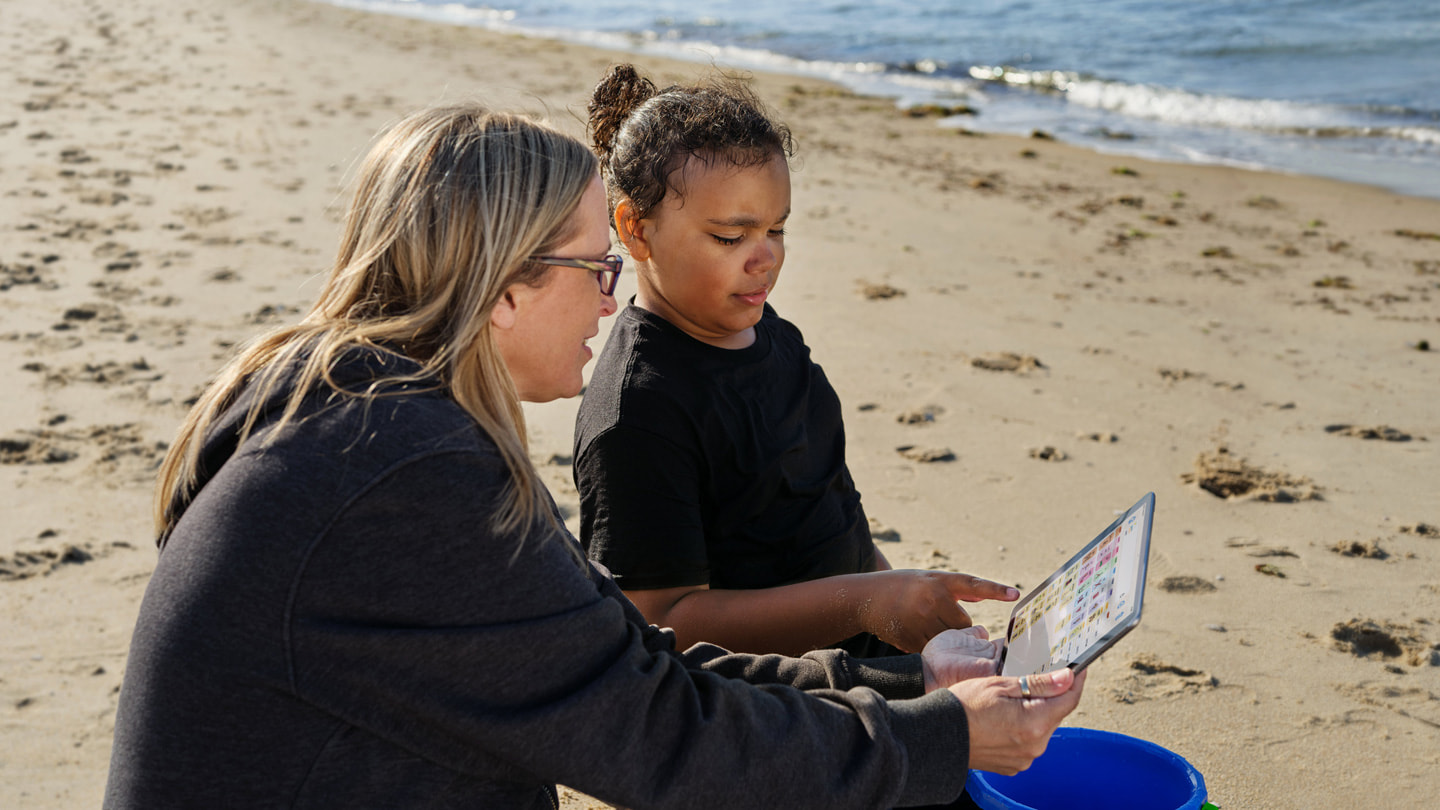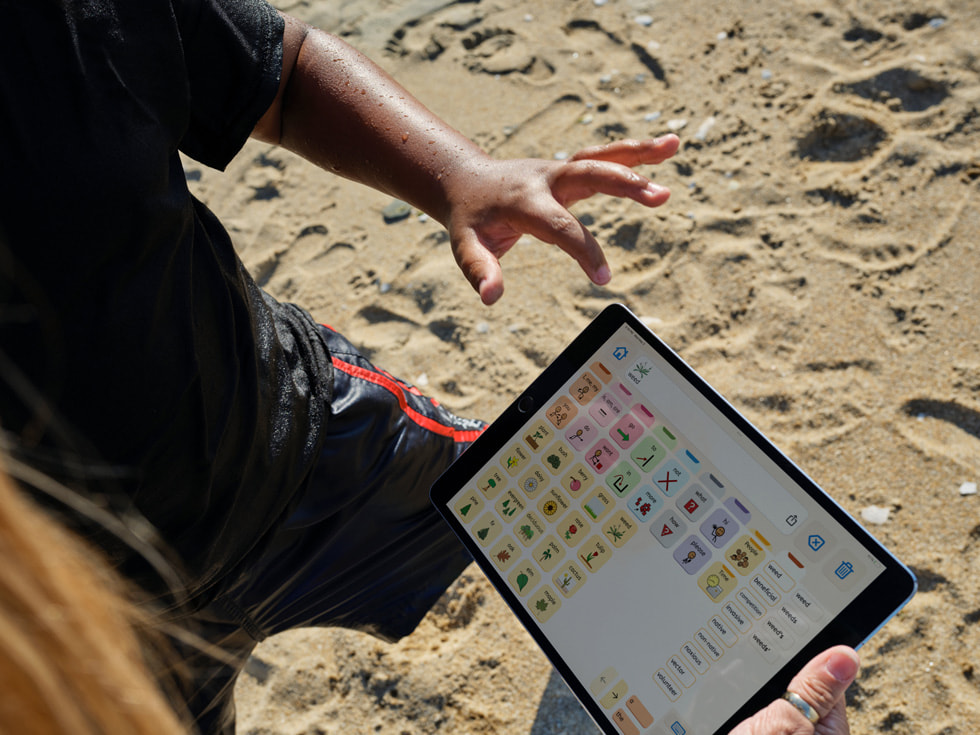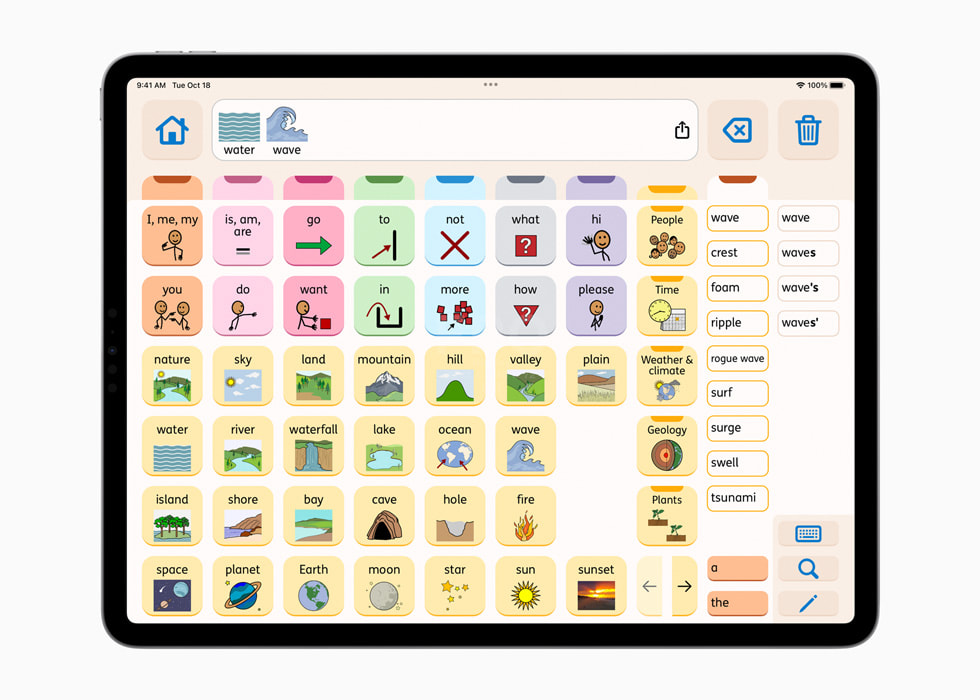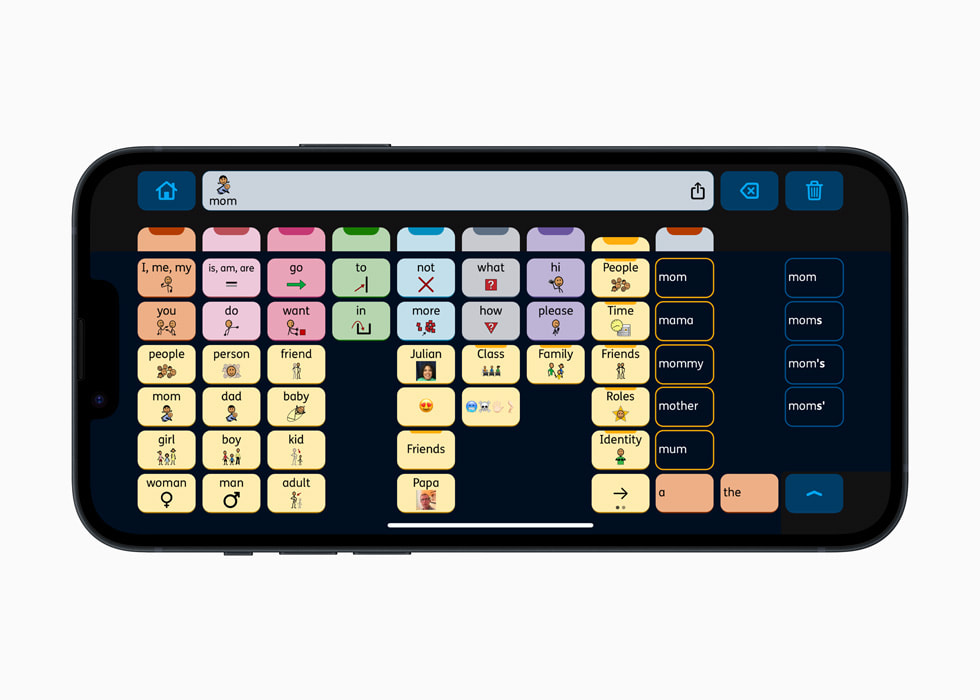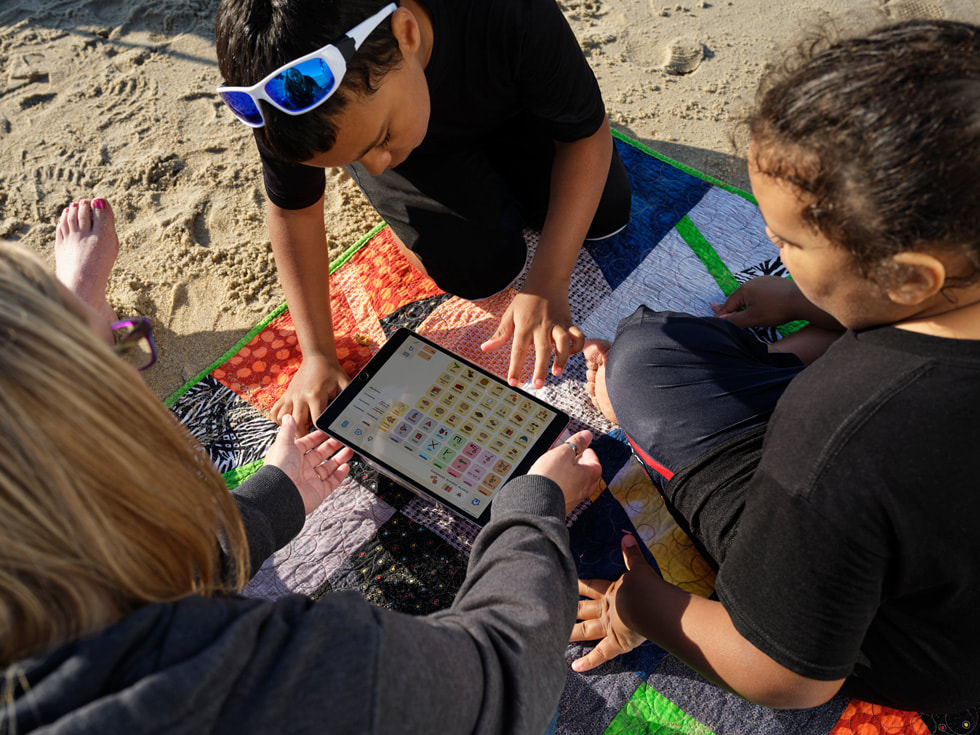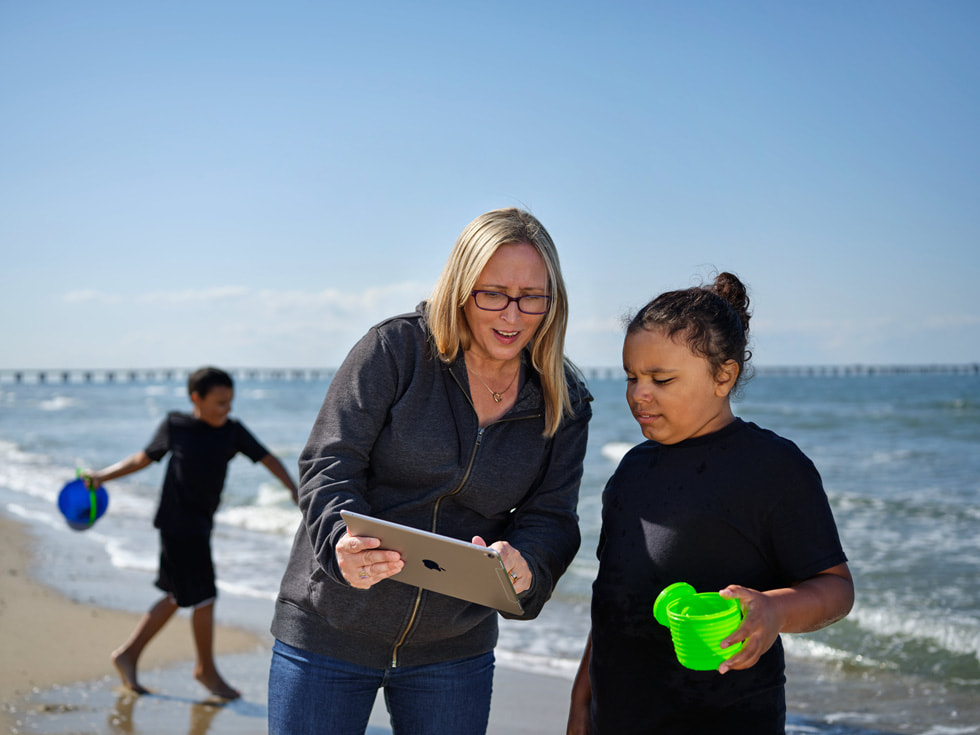apple stories
AssistiveWare ushers in next generation of augmentative and alternative communication technology
How app development company AssistiveWare is innovating augmentative and alternative communication software
Every afternoon, 9-year-old Jay accompanies his mother Meghan Ashburn and his twin brother Nick to Virginia Beach, where they unwind from the day’s stimulation at school, in their home and out in the rest of the world.
When Ashburn asks Jay why he loves the beach, he picks the ‘sunset’ button, then says, “No school. Yes beach”.
In 2015, Jay was diagnosed with autism. By the age of 4, he started using Proloquo2Go, an augmentative and alternative communication (AAC) app created by development company AssistiveWare, available for iPhone and iPad.
“The beach has always been a place where Jay can explore and relax on his terms,” Ashburn explains. “As a family, we visit as often as the weather allows. He loves the sand, the waves and the gorgeous sunsets.”
Proloquo2Go embodies AssistiveWare’s mission: to make AAC an effective and accepted means of communication. A variety of people adopt these tools when they’re unable to produce oral speech, including those with ALS, cerebral palsy, autism and more.
Bringing this technology to Apple devices represented a considerable shift for AAC users and David Niemeijer, AssistiveWare’s founder and CEO. With AAC available on consumer devices, the number of people who could afford and use the technology ballooned. This also enabled AssistiveWare’s rapid growth.
“One of the coolest things about the iPad and the iPhone is that they’re not separate devices,” says Niemeijer. “They’re cool devices that everyone else uses too, and that has already made a major difference in its acceptability. But we still have more work to do.”
AssistiveWare’s next generation of AAC apps, Proloquo and Proloquo Coach, became available in 2022. Beyond generating speech, Proloquo helps users build phrases or sentences, learn related words, and expand their language and grammar. Proloquo Coach provides families and educators with the tools to support children and students in their learning.
Proloquo features 49 genuine children and adult’s text-to-speech voices and 12,000 words — about three times more than other AAC apps. AssistiveWare apps also support VoiceOver and Switch Control for users who are blind or low vision, or have limited mobility.
For AAC users, Niemeijer believes finding a customisable experience is an important step. Apple’s new accessibility features — previewed this week — include Assistive Access for people with cognitive disabilities, and Personal Voice for those at risk of losing their ability to speak, giving users more options to tailor their experiences to their needs.
“We’re really excited to integrate these new features into AssistiveWare’s apps,” Niemeijer says. “We recently released support for iOS’s built-in voices in Proloquo, so users have access to an even wider range of voices to choose from. The introduction of Personal Voice has the potential to provide our users with even more options to personalise how they communicate. This, combined with features like Assistive Access, will enrich the opportunities available to us to customise the user experience and allow users to tailor our apps to their personality and needs.”
Today, Jay uses Proloquo and other modes of communication to speak to his family, teachers and friends. Children make up 80 per cent of Proloquo users: Jay is one of the app’s 100,000 daily users and 300,000 overall users around the world.
“The awareness of AAC among the public will increase in the next five years,” says Ashburn, who previously taught elementary school. Jay learns in a general third-grade class. “It’s a big deal, because he’s nonspeaking and they tend to get separated.” Jay’s third-grade classmates also use Proloquo as one way of interacting with him.
“Proloquo’s unlimited sharing capability is probably my favourite feature. I can build an AAC team for Jay. His teachers, extended family and even classmates have access to Proloquo on their personal devices for free,” Ashburn continues. “I can’t even describe how beneficial that is. It’s such a game changer in terms of leveraging AAC.”
Jay is currently experiencing improvement in his speech, and uses Proloquo to practise speaking. To learn new words, he presses the button again and again, until he can start speaking the word or phrase himself. “Shut the door” is a phrase Ashburn says she frequently hears, as Jay enters his preteen years.
“Many AAC options limit the words a child can choose from,” says Ashburn. “Proloquo has such a large vocabulary that Jay can choose almost any word he wants. The built-in keyboard makes his options limitless.”
Back in Amsterdam, AssistiveWare’s team of researchers, AAC experts, designers, developers and quality assurance engineers — including 27 local employees and an additional 35 around the world — innovate the technology behind the products and push forward research and advocacy work around AAC. “Most research in this field looks at the change that happens upon an intervention for a single person,” Niemeijer explains. “We instead have consent-based anonymous data on tens of thousands of AAC users. That’s not common. We bring insights from a larger scale to the table, which leads to interesting conversations.”
Apple’s Guided Access, an accessibility setting introduced a decade ago to restrict devices to a single app, radically improved the app’s potential. “Before that, one of the challenges families and schools had was that the child would start in a communication app, but then jump out and go to another app,” says Niemeijer. “With Guided Access, it was possible to keep the focus on learning and communicating.”
Developing for the Apple ecosystem holds another key advantage: Apple maintains software support for years, making it a sound investment for families and schools.
“It gives us the time and space to focus on innovation,” Niemeijer says. “That way, AssistiveWare doesn’t get stuck in the past.”
For the next generation of AAC users, Niemeijer hopes this form of communication becomes as widely accepted as texting. More than developing the technology, the stigma around AAC represents the biggest hurdle for its users.
“I still think we have a long way to go,” says Niemeijer. “If you can’t speak, the assumption is still that you probably don’t have much to say. That assumption is the biggest problem. I hope to see a shift toward respecting this technology so it can have the biggest impact.”
Share article
Media
-
Text of this article
-
Images in this article
